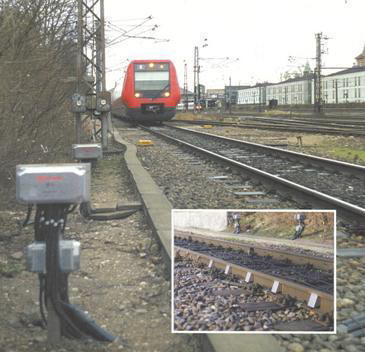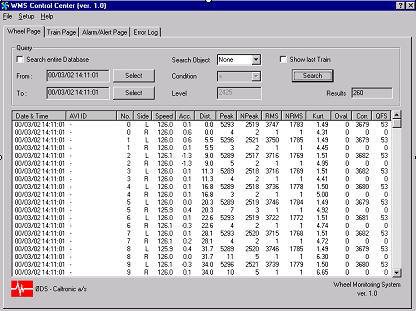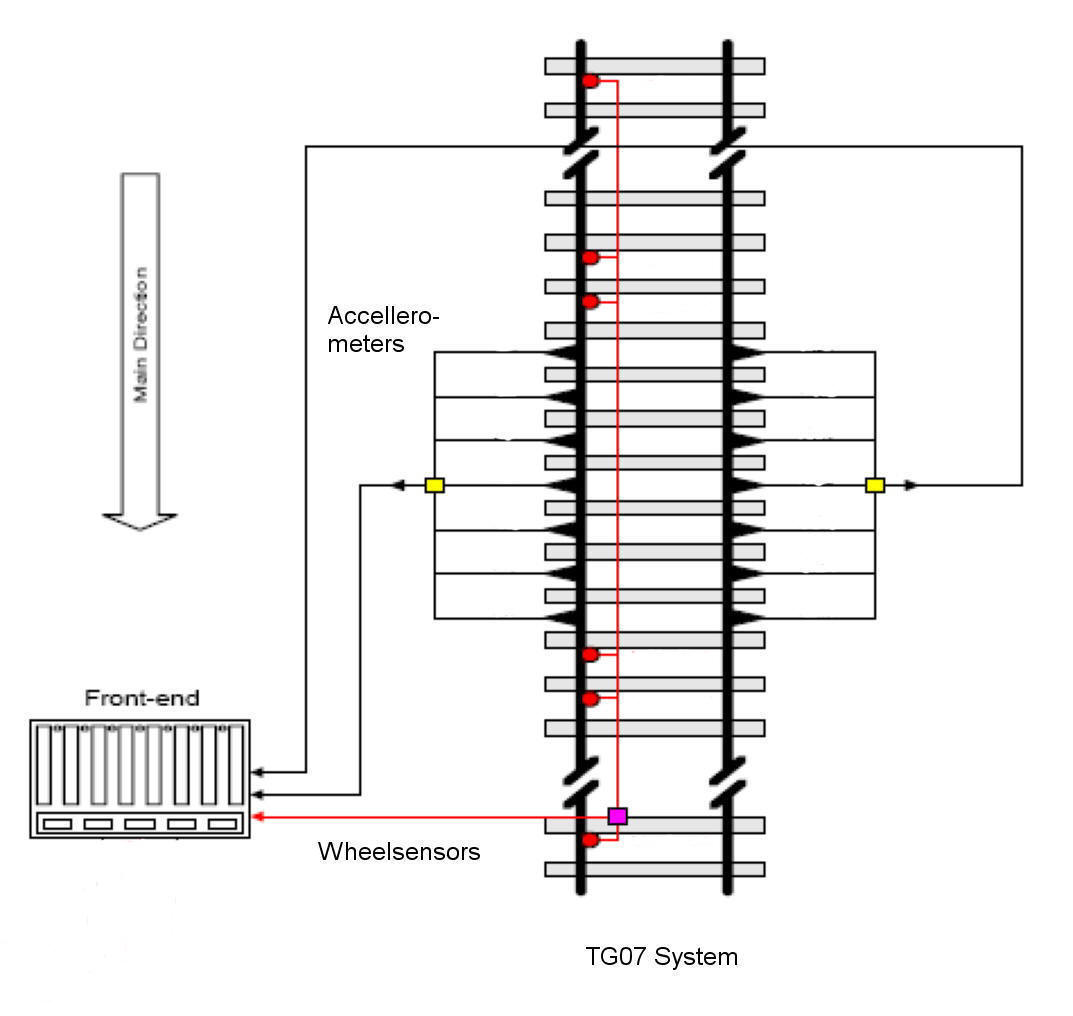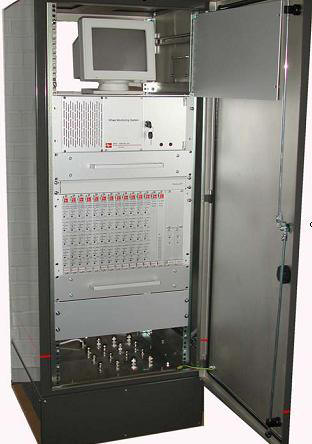|
Marketing,
Production, and Service Rights for this system have recently been
handed over to Hans Erik Misser ApS.
Wheel
Monitoring reduces:

·
Wheel
maintenance costs
·
Vehicle
& track
down-time
·
Wheel
inspection costs
·
Track
& component
damage
·
Ground
transmitted vibration
·
Environmental noise impact
Wheel
Monitoring Pays Off
The need for
early warning and detection of irregularities on running
wheels such as flats, corrugation and out-of-round has dramatically
increased with the application of new tread materials, higher speed
and an increased public awareness of noise and vibration abatement.
Continuous
wheel monitoring not only complies with such demands but also offers
considerable savings in terms of more cost -effective wheel
maintenance procedures and reduction of wear and damage on rails and
car components
   Environment Environment
The WMS as a
whole and the rail mounted sensors and assemblies in particular have
been designed to operate reliably under the often extreme
environmental track conditions such as very wide temperature range,
mechanical shocks, occasional flooding, high electromagnetic
interference, rodents, grease, dirt, etc.
An
accelerometer requires virtually no calibration or maintenance. It
has no delicate moving parts, it covers a very wide speed range and
temperature range and no temperature drift compensation circuits are
needed.
Different types of sensor
mountings are available. Mountings do not interfere with ballast and
sleepers.
All assemblies of the WMS
have passed severe electrical and mechanical vibration and shock
tests according to relevant international test standards
Easy Upgrading
The
series of WMS offers a modular design and is readily upgraded by the
user himself e.g. from a TG.07 to a TG.14 or TG.21. The signal
processing software and system software are identical for all three
versions, only additional modular hardware is required for adding
more channels.
Unattended Operation
The WMS track-site equipment
has been designed for maximum reliability and ease of maintenance.
Data are transferred continuously and automatically to the OCC
(Operating Control Center). All user-defined functions and set -ups
are controlled from the OCC terminal. All user-defined functions
and setups are controlled from the OCC terminal. An error log is
automatically sent to the OCC and a trouble-shooting programme
allows remote diagnosis of system faults.
Main Wheel Parameters
·
Wheel
Flats
·
Out-Of-Round
·
Kurtoisis
·
Corrugation
·
Impact
signal
values
Vehicle & Wheel identification
Identification may take
place an the basis of time stamps or fully automatically by
connecting an AVl system to the WMS. The AVl (Automatic Vehicle
Identification) system is an option.
Data Transfer & Communication
The WMS connects with the
remote OCC via a leased public telephone line and a serial Modem
connection or LAN connection

Selecting the Installation Site

Location
The main track where most
cars run, provides the optimum cost/benefit ratio for the system.
The track must be straight with welded joints and the distance to
nearby switches and crossings should preferably be at least 50
metres.
System Configuration
The accuracy
increases with the number of full wheel revolutions measured during
a train passage. The TG.07 measures at least one full revolution and
the TG.21 covers 4 full revolutions during one passage. TG.21 is
required for OOR (Out-Of-Round) detection. Other factors may also
influence the proper choice of system configuration.
Passage
Speed ODS-Caltronic should be consulted in each case as the ideal
speed range depends on traffic and site conditions.
Track-side Cabinet

The IP65
stainless steel cabinet is configured according to WMS version. The
picture shows a fully configured 42 channel TG.21 system.
FFT
Analysis
The WMS uses
an advanced FFT algorithm to analyse and calculate various wheel
parameters.
User-Software with
Database
A standard
PC is recommended at the OCC as a dedicated WMS communication
terminal on which the ODS-Caltronic user software is installed. All
WMS functions are accessed and monitored from the user software and
fault diagnosis software |